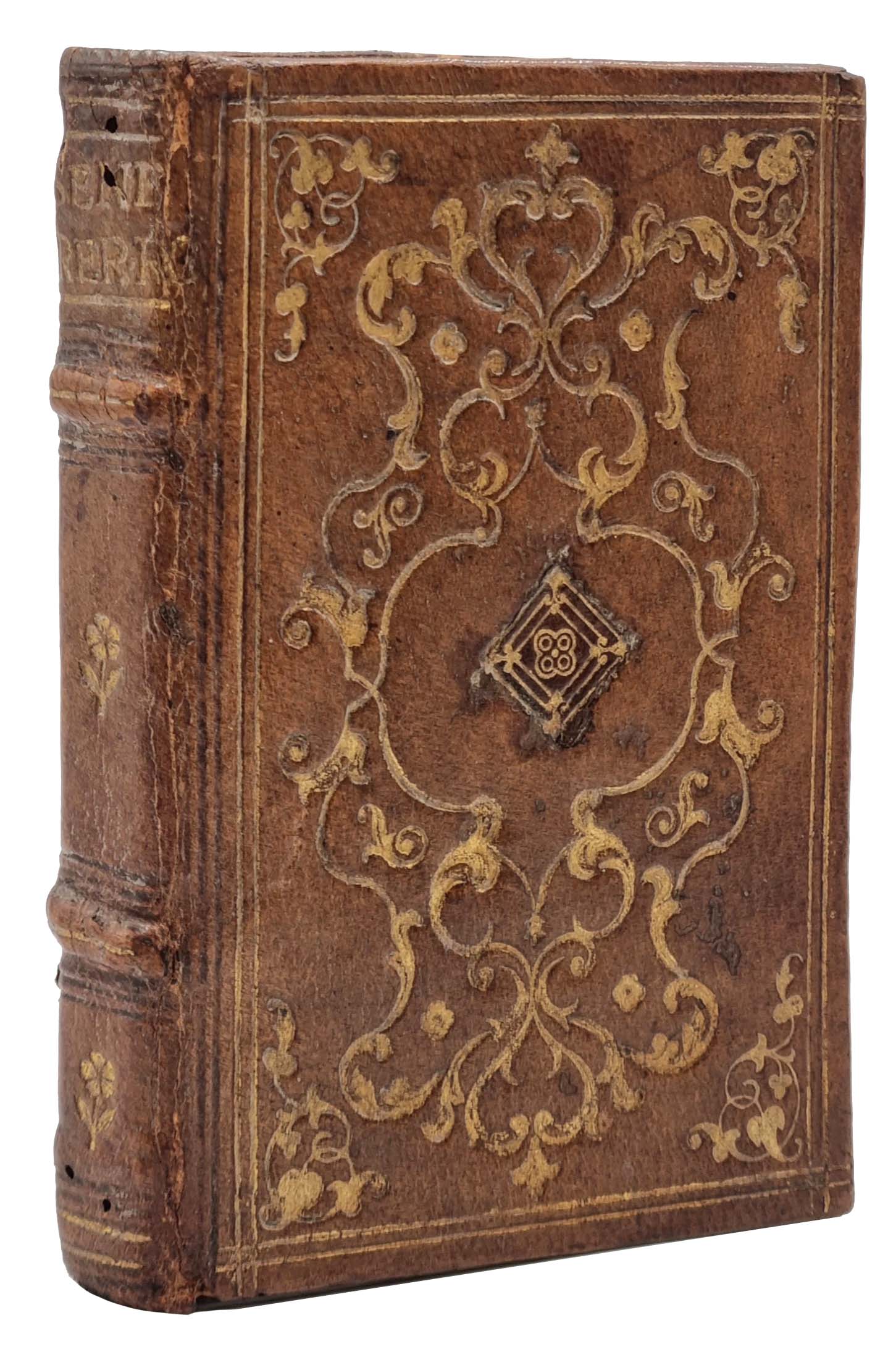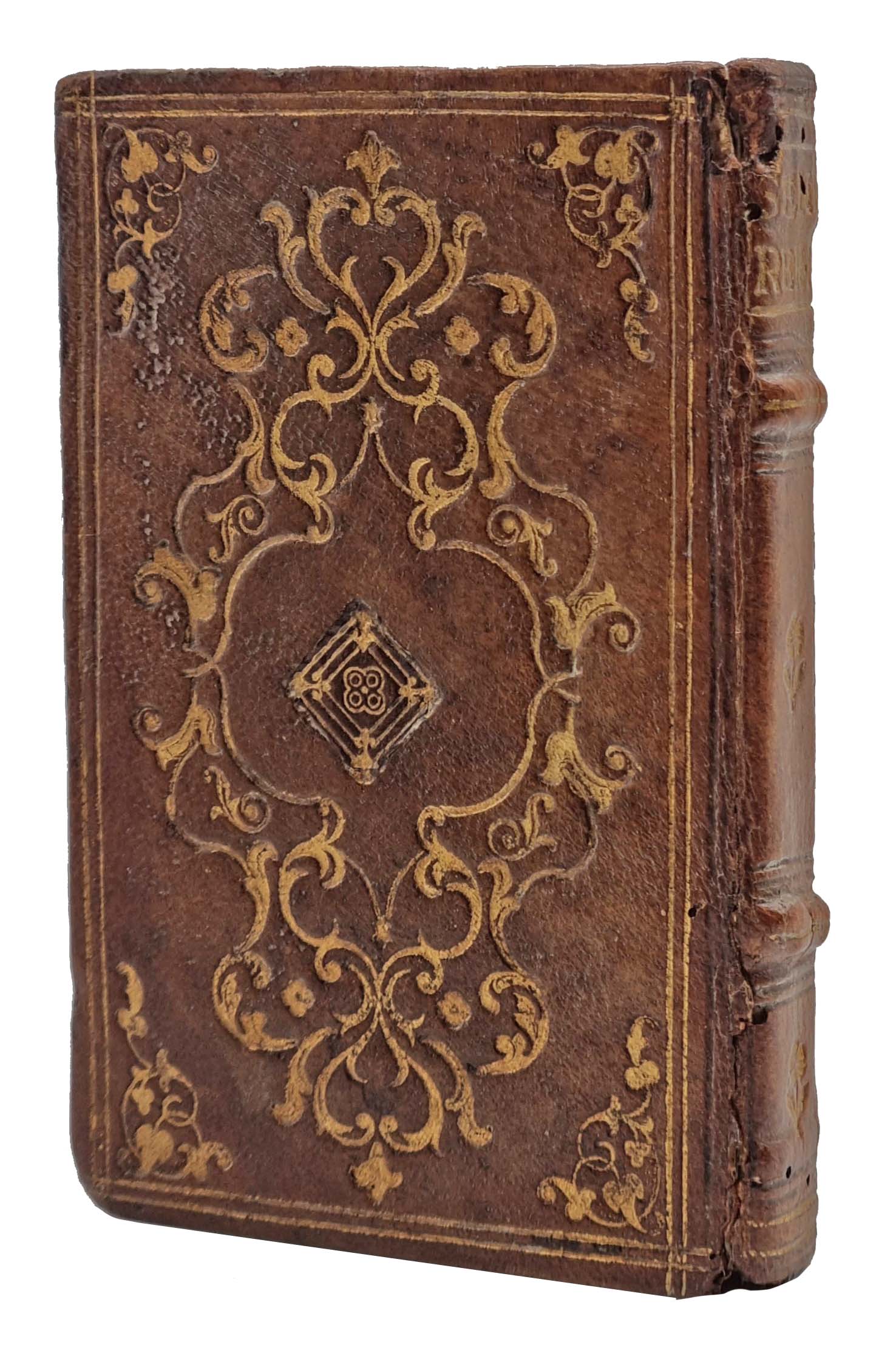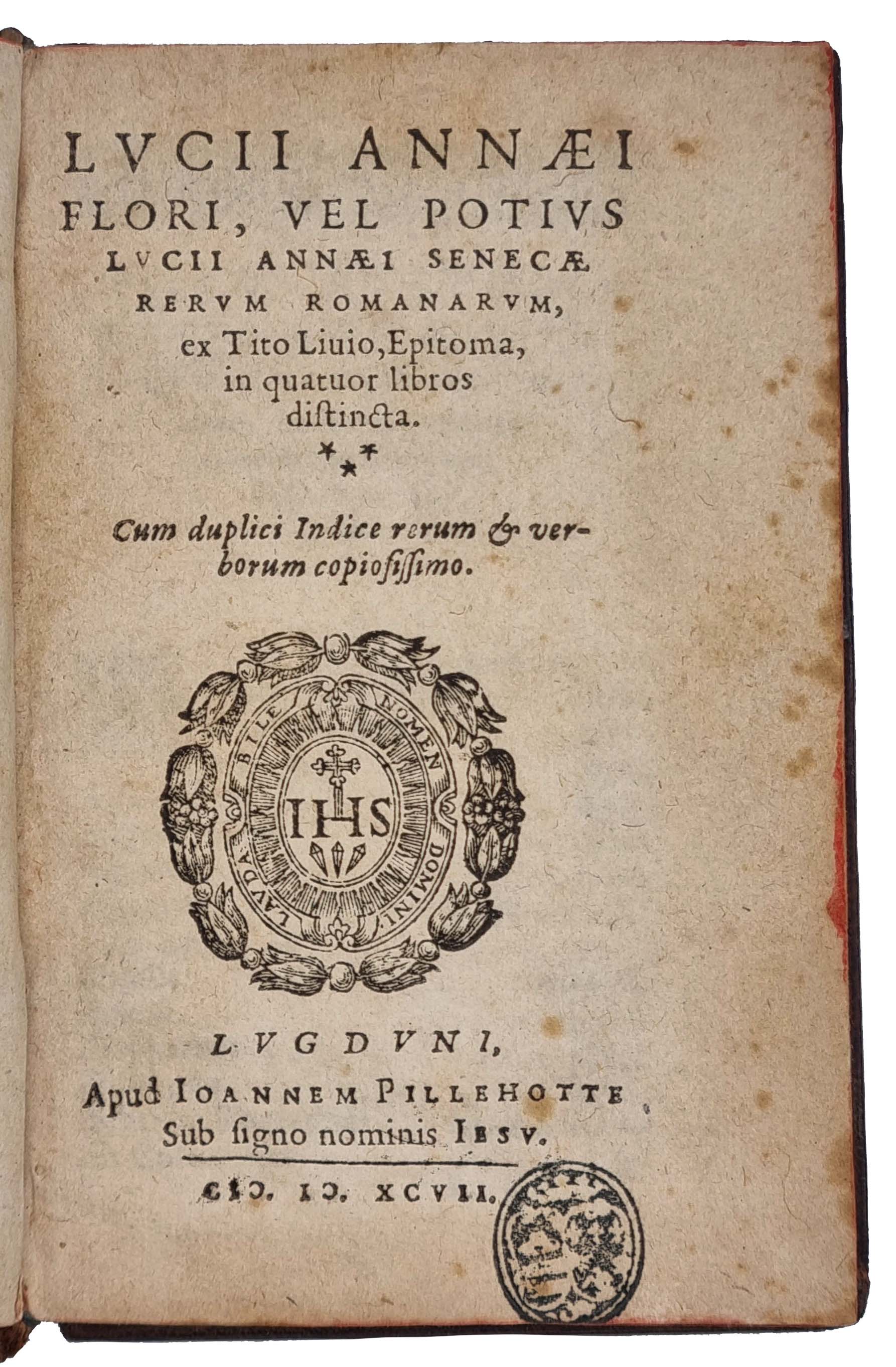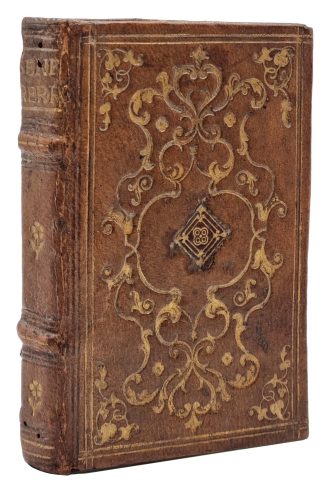FLORUS, Lucius Annaeus
Rervm Romanarvm, ex Tito Liuio, Epitoma, in quatuor libros distincta
Lyon, apud Ioannem Pillehotte, 1597£4,950.00
16mo. pp. (xl) 182, (ii). *8, **8, ***4, A-L8, M4. (last leaf blank.) Italic letter, tables in Roman. Woodcut printer’s device on title, floriated woodcut initial and headpiece, small early armorial stamp on lower margin of the title-page, ms. shelf mark on fly. A very good copy in beautiful contemporary French tan morocco, covers bordered with a double gilt rule, central panel worked to an all over gilt scroll work design, fine scrolled corner-pieces, Later finely gilt worked red morocco inlays at centres, spine with two gilt and blind ruled raised bands, title gilt above, a.e.r. A few small wormholes in spine, slight damage to lower joint at head.
A very beautifully bound copy of this exceptionally rare edition, finely bound in a style that is very close to or imitates bindings made for the Cardinal de Granvelle or Mahieu by the Fugger or Apple binder, though French. The binding, apparently made at the very end of the C16th, seems closer to those of the mid century, though freer in style. The scrolled corner pieces with a distinctive leaf in the outer corner look like a conscious imitation of the Fugger binders distinctive tool. It is exceptionally finely worked for such a small binding, totally unsophisticated, and very well preserved. An inlay has been added to the centre of the binding in red morocco probably to cover a monogram or cypher that the new owner wished to cover. Many armorial bindings had their arms removed during the revolution so as to disguise their noble or ecclesiastic provenance which could have been dangerous or embarrassing to the owner. Unfortunately we have not been able to identify the small princely armorial stamp on the title-page.
This edition of Florus is exceptionally rare; we have located only one copy in libraries, at San Diego State University. There is apparently no copy held in French or any other European library. Neither is it recorded in either of the Lyon bibliographies, Baudrier or Gultlingen.
Lucius Annaeus Florus (74 AD – 130 AD) was a Roman historian who lived in the time of Trajan and Hadrian. He compiled, chiefly from Livy, a brief sketch of the history of Rome from the foundation of the city to the closing of the temple of Janus by Augustus (25 BC). The work, is a panegyric of the greatness of Rome, the life of which is divided into the periods of infancy, youth and manhood. It is often wrong in geographical and chronological details. In spite of its faults, the book was much used as a handy epitome of Roman history in the Middle Ages, and survived as a textbook into the nineteenth century. In the manuscripts, the writer is variously named as Julius Florus, Lucius Anneus Florus, or simply Annaeus Florus. From certain similarities of style, he has been identified as Publius Annius Florus, poet, rhetorician and friend of Hadrian, author of a dialogue on the question of whether Virgil was an orator or poet, of which the introduction has been preserved. The Epitome of Livy is Florus’ most famous work, offering a unique insight into the lost books of the famous History, only around a quarter of which survives.
A very beautiful and most intriguing binding.
Not in Baudrier, Gultlingen or BM STC fr. C16th.In stock





